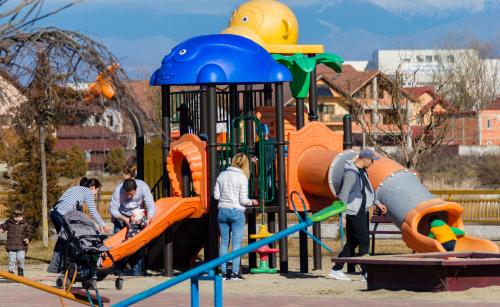Congress will soon determine the extent of the nation’s investment in its youngest citizens. After years of spending on the margins, President Biden’s plan for universal pre-K for 3- and 4-year-olds, child care subsidies, and increased wages for teachers and caregivers acknowledges that the early years of childhood are of unique importance to the public welfare and must be funded as such. Investing in children’s early years pays off both for their and their parent’s success in life, and their contributions to the economy and society—a multigenerational return.
The school entry boost
Studying a diverse cohort of 2,500 children through the preschool and early elementary years, we examined the benefits from enrolling in early educational programs—whether entering at 3, 4, or 5 years of age. The results are clear—enrollment contributes to students’ learning and development the year in which they enroll, and they enter the following year performing significantly better than peers without those prior experiences. We call this effect the “school entry boost.”
Children get this boost at age 3, 4, or 5 as they first experience a program organized around educational and developmental principles. The boost is not trivial—closing half the skills gap between children from under-resourced environments and their more resourced peers or between racially minoritized and majority students. The boost is most apparent for early skills in language and communication, reading and math, and cognitive skills such as working memory and inhibitory control—all critical elements of success.
The boost is most evident when children with early education experience start a new school year well ahead of peers who did not have that opportunity the year before. For example, students who attended a preschool program at age 3 were ahead of their peers as 4-year-olds at the start of pre-K. The boost at 3, 4, or 5 was similar across a range of racial and ethnic groups—meaning early education benefited all children—with suggestions that English language learners gained to an even greater degree.
The skills boosted by early education do not fade out. Although differences between children with and without prior early educational experiences diminish, this is entirely because children “catch up” when they get the boost of coming to school for the first time. The boost is more likely to be sustained when followed by another year or more of high-quality learning environments.
Early education programs boost learning through the experiences they provide in classrooms. We observed in programs and identified in classrooms that boosts can then sustain learning by stimulating, supportive teacher-student interactions and relationships and challenging learning-focused activities taught in a sensitive and responsive manner. These “ingredients” benefit children across racial, ethnic, linguistic, and income groups. And if children are fortunate enough to land in classrooms like these year in and year out, their learning is sustained. Unfortunately, few children are that lucky.
Finally, we discovered that teachers’ emotional well-being matters for how well they can provide these elements in their classrooms.
What do these findings mean for the policy debates underway?
First, early education programs are beneficial. Yet, there are gaps in their availability. Fully funding universal access for 3- and 4-year-olds would be a game-changer. It is time to welcome all 3- and 4- year-olds into school—a public system of appropriate, stimulating, and caring educational opportunities.
Access to an effective early education opportunity is too often a matter of luck. It’s time to make it a guarantee.
Second, public school systems should be held accountable for the quality and benefits of public education for 3- and 4- year-olds. Legislation should ensure high standards for curriculum, the classroom environment, and teacher preparation and training. Legislation should require public school divisions and state agencies to operate education for children ages 3-8 as an integrated, single system.
Third, we must invest in the adults who staff early learning and care programs. Those (nearly all women) who work with preschoolers are teachers. Investments that elevate and stabilize the wages and professional stature of child care workers are a necessary component of a national strategy for human capital.
For many of our youngest, most vulnerable, and most marginalized citizens and their families, early education can be a lifeline, just as it is for the more advantaged children. Access to an effective early education opportunity is too often a matter of luck. It’s time to make it a guarantee.









Commentary
Invest in programs that boost children’s learning and development
October 5, 2021